Ackees are a tropical fruit that originated in West Africa but now grows in various parts of the world where the climate is warm. Jamaicans revere this fruit, and since importing this plant in 1773, they have now elevated its status to the national fruit of Jamaica.
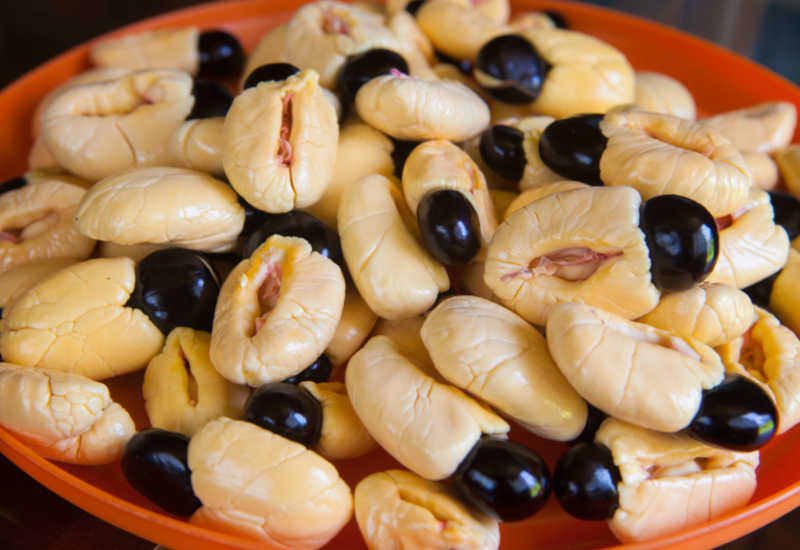
If you’ve come across ackee fruits for sale at your local grocery store or market, you may be wondering, "What does ackee taste like?" Is it worth your money, or are you better sticking to better-known tropical fruits like the banana or pawpaw? We’re about to provide an in-depth look at the ackee and its uses in the kitchen.
Table of Contents
Describing the Ackee Flavor
The raw yellow flesh of an ackee fruit has a very mild, savory flavor that is similar to cream cheese with a slightly nutty, bitter undertone. Others compare it to garbanzo beans, avocado, or almonds. The texture is firm like a jackfruit and juicy, with a buttery mouthfeel. Once cooked, the ackee softens and has a melt-in-your-mouth feel.
Prefer to sit back and listen?
Related articles about tropical fruit
What do jabotcaba taste like?
What does a pomelo taste like?
What does a rambutan taste like?
Butter Ackee Vs. Cheese Ackee
The flavor characteristics of an ackee will vary depending on the variety. There are two main types, which are the “butter” and the “cheese.” If you ever hear people disputing what an ackee tastes like, often it’s because they’re comparing different fruits. Although their visual appearance can distinguish these two, they’re also worlds apart in their texture and culinary uses.
1. Butter Ackee
A butter ackee can be identified by its yellow arils, which are the edible meaty flesh. You can see the parts of the fruit below to help.
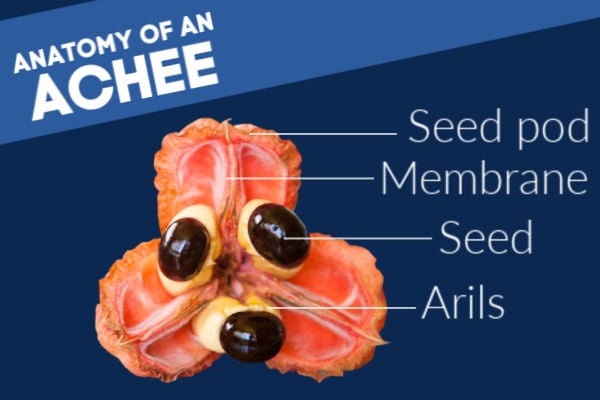
Its flesh is soft and creamy, similar to a cream cheese texture, and very buttery.
Note: The only edible parts of the ackee are the arils. Extreme caution should be taken if you decide to eat them at home, as the remaining parts are toxic. In severe cases, they can be fatal when consumed.
Culinary Uses
Butter ackee is useful for recipes that call for the fruit to be broken up, rather than kept in one solid piece. If you’re adding them to food and want the fruit to stay intact, add them at the end of the cooking.
Here are some of our preferred culinary uses for butter ackee:
- Mash it with garlic, butter, and potatoes, then process it in a potato ricer.
- Bake in cakes, muffins, or bread for a twist on your regular baked goods.
- Deliciously infused into a custard, it adds a lovely mouthfeel to ice cream.
- Toss a handful of the fruits into a morning smoothie for a creamier texture.

2. Cheese Ackee
Cheese ackee has much lighter arils, more of a palish cream color. When cooking cheese ackee, you’ll notice that the texture is firmer, and it doesn’t break up as easily. It can take the knocks much better when cooked in a frying pan. Visually, when cooked and plated, this type of ackee looks like scrambled eggs.
Culinary uses
After cooking cheese ackee, you may find it difficult to mash. To fix this, add the cooked ackee to a pot. Splash with a little water and sprinkle with baking soda. Finally, simmer until the liquid has evaporated, and you’ll find the fruit is much softer thanks to the baking soda.
Some other tasty recipes that use cheese ackee are:
- add to a fresh salad for an interesting textural element.
- toss into a stirfry or sauté them on their own with some garlic and onion.
- make a Caribbean traditional breakfast, ackee, and saltfish.
- add to casserole, soup or rice dishes, quiche, or callaloo.
More related articles
What does the amla fruit taste like?
What do soursops taste of?
What do ripe papaya taste like?
Canned Ackees

If you’re going to try ackee for the first time, there’s a good chance you’ll be eating the canned version, imported from Jamaica. Finding it fresh in the United States will be a challenge due to an FDA ban on its importation. Even the canned fruit is inspected on arrival to ensure it is ripe. The unripe fruit contains high levels of hypoglycin, which can cause Jamaican vomiting sickness.
Cheese ackees are the preferred variety used by canning manufacturers in Jamaica. However, the texture of the canned product is mushier and softer than freshly cooked ones. When cooking with canned ackees, drain out the liquid and add the fruit at the end of the cooking, as they will break up easily.
How to Cook Ackee and Saltfish
Jamaica’s traditional breakfast is a dish that is packed with carbohydrates, making it perfect food for those with a big appetite. In Jamaica, it is usually a low-cost meal served at roadside diners. You’ll typically receive plantains, breadfruit, yams, fried dumplings, and callaloo. In addition to these, you can opt for ackee and saltfish.
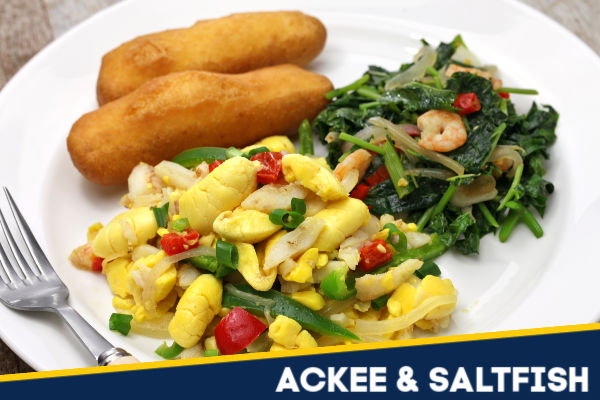
To make ackee and saltfish at home, you’ll need a can of ackee and some salted cod from your local fishmonger. Finding the fish is easy as it is widespread; however, if you’re struggling to find canned ackee, then Linstead Market Ackee is your best option, which is available on Amazon.
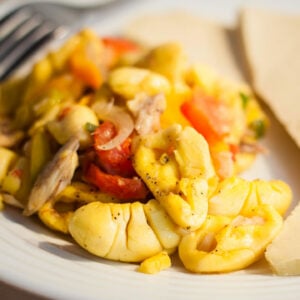
Ackee and Saltfish
Ingredients
- ½ lb salted codfish boneless
- ⅓ cup canola oil
- 3 cloves garlic crushed
- 3 scallions chopped
- 2 onions sliced
- 1 cup bell peppers any color
- 20 oz canned ackee
- 1 tsp paprika
- 1 tsp black pepper
Instructions
- Gently run the codfish under cold water to remove any salt then add to a bowl filled with hot water. Allow soaking for an hour before replacing the water with more hot water. Soak for another hour.
- Heat a skillet on medium setting then add the oil. Sprinkle in the garlic and cook for one minute. Add the scallions, onions, peppers, and cook for five minutes, occasionally stirring.
- Drain the ackee, then add to the skillet and cook for five minutes. Stir the food gently to avoid breaking up the ackee too much. Sprinkle over the paprika and pepper and remove from the heat. Serve immediately.
Nutrition
Can you eat raw ackee?
The ackee arils can be eaten raw; however, it is essential that the fruit is ripe or the fruit won’t be for human consumption. You’ll know that it’s ripe when the fruit has opened up, exposing the inside arils.
Fast Facts
- Jamaica’s export of ackee increased from US$4.4m in 2000 to US$20m in 2016.
- The ackee has various other names, including achee, Blighia sapida, or ackee apple.
- It is part of the soapberry family (Sapindaceae), the same as the rambutan, lychee, and longan.
- The ackee tree can also be used as a soap for laundering, cologne, hardwood for construction, and in medicine.
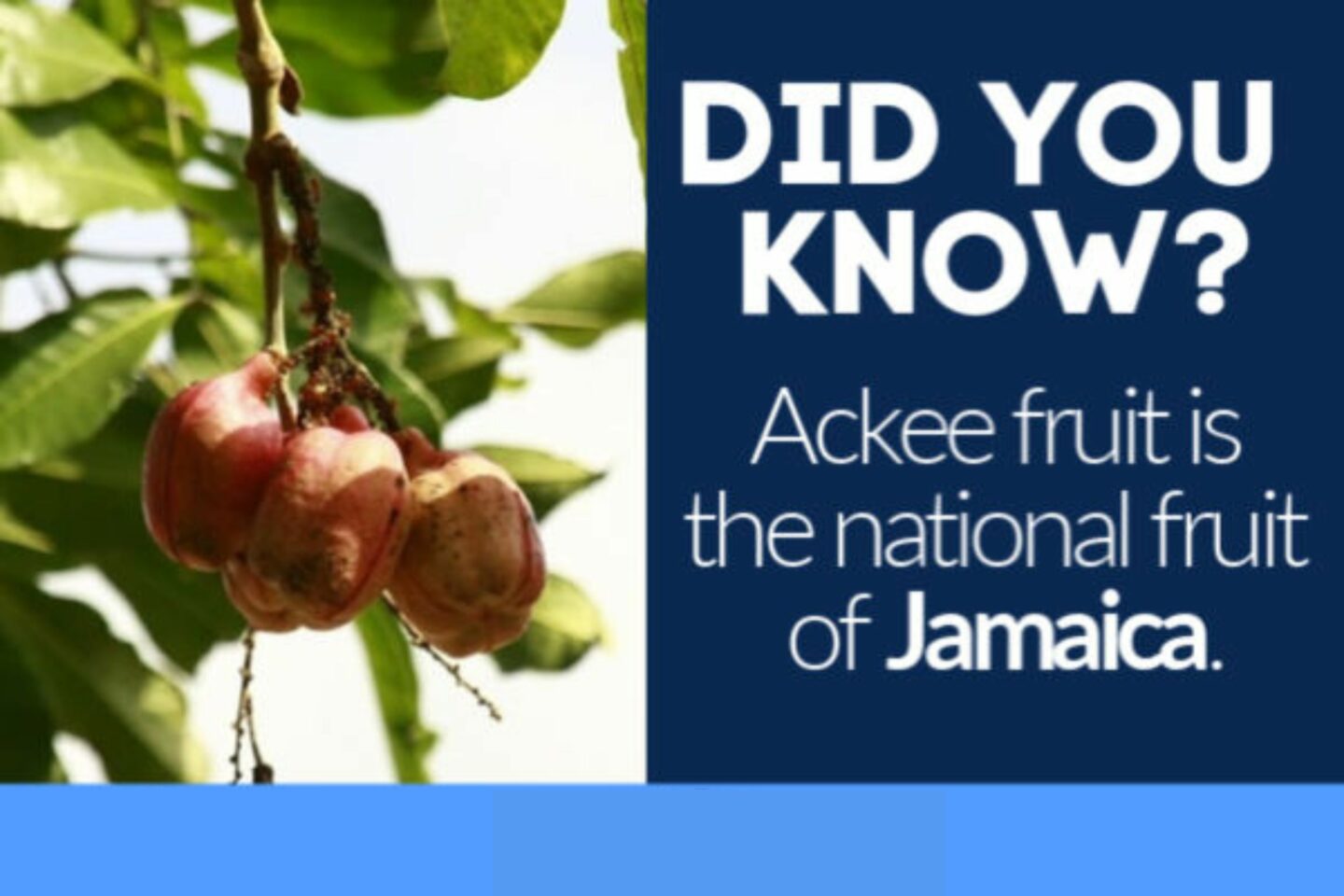
Summing Up
Ackee is a unique fruit that doesn’t compare to any other edible fruit you’ll have eaten. Its mild, nutty flavor profile combined with a buttery texture makes it ideal for savory dishes; however, it can also be used for plenty of sweet recipes too.
For the “ackee novice,” eating the canned fruit is your safest option. If you’re eating them fresh, make sure they’re ripe and that the only part you eat is the arils. Never eat the seeds or anything else that looks like it might be okay for eating. For a safer tropical fruit eating option, you might want to try a noni fruit. Warning: this fruit isn't for the faint-hearted.
Have you tried ackee before? Let us know in the comments below what you think of it.
Reference:
https://www.sciencedirect.com/topics/agricultural-and-biological-sciences/ackee

Leave a Reply